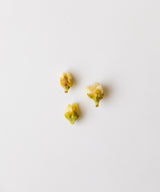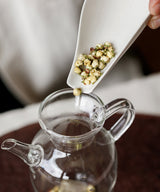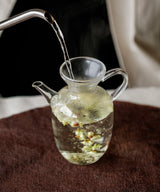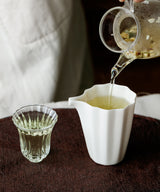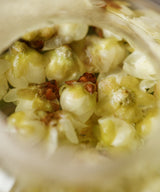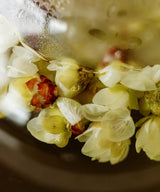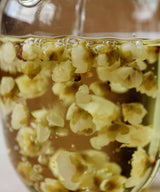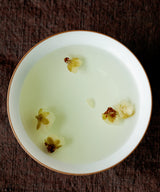Plum Blossom
黄山梅花
Harvest
February 2025
Origin
Huangshan, Anhui
Plum trees bloom in the depth of winter. I have always admired and loved plum blossoms for this. Appearing amidst falling snow, we regard them for their bravery as much as for how incredibly pretty they are. In Chinese culture they symbolize perseverance, as the beautiful qualities of these flowers are a result of their negotiation with adverse circumstances.
Our plum blossoms are from the villages of the renowned Huangshan, or “Yellow,” Mountain. This area is significant not only for the lineage of poets, artists, and hermits it attracts, (the entire area is an UNESCO World Heritage Site), but also for its impressive biodiversity. Huangshan Mountain range, with its dramatic peaks suspended in a consistent sea of clouds, is a place where time seems to have stopped – this terrain protects human practices, rhythms, and plant and animal species that are all nearing extinction.
The Plum Blossoms are harvested in early January from long-standing plum trees on this mountain; they are between 60-100 years old. The dark metallic bark of these trees stands out against the stark winter landscape. On their bare limbs, the white blossoms hold tightly to the branches. They appear in clusters that eventually proliferate to decorate the entire crown of the plum trees. If it wasn’t for their scent, they could be mistaken for delicately accumulated snow.
These old trees thrive in the mountains on their own, without human intervention. No sprays or chemicals are needed, or considered, in cultivating them. After the flowers are harvested they are dried naturally, in open air, on bamboo trays.
Plum blossoms are treasured for their poetic significance and their medicinal benefits. They are known to calm the liver and stomach, and clear heat and dryness from the body. The taste of them is very soothing, with incredible notes of green almond and toasted apricot kernel.
This year’s harvest is particularly potent and fresh tasting. The tea smells and tastes like marzipan, and, once in water, the little flowers open as though still alive.
. . .
Brewing guide
| Tea | 1 g |
| Temperature | 100°C |
| Water | 250 ml |
| Steep time | 30 sec - 2 min |
| No. of infusions | 4 |

